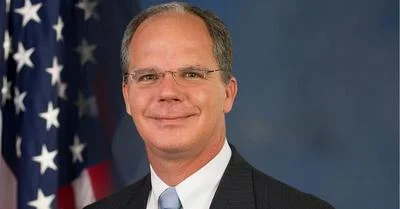Dear Mr. Gorsky:
I am troubled by recent reports of an alleged decades-long effort by Johnson & Johnson to potentially mislead regulators and consumers about the safety of one of its products, which may have resulted in long-term harm for men, women, and children who used Johnson & Johnson baby powder. According to a December 2017 Reuters report, “from at least 1971 to the early 2000s, the company’s raw talc and finished powders sometimes tested positive for small amounts of asbestos, and… company executives, mine managers, scientists, doctors and lawyers fretted over the problem and how to address it while failing to disclose it to regulators or the public."[1] I therefore request documents and information related to Johnson & Johnson’s safety record in order to understand more about efforts by Johnson & Johnson to determine whether there were possible carcinogens in its baby power and how it presented that information to regulators and consumers.
Available documents show that Johnson & Johnson’s internal information raised questions about the purity of the talc used in its baby powder. As early as 1957, a consulting lab informed Johnson & Johnson of contaminants in the talc from the company’s supplier, then in Italy.[2] In the 1960s, the company began sourcing its talc from Vermont mines, and contaminants were soon discovered in the talc there, too.[3] A series of lab reports conducted for the company between 1972 and 2003 confirmed that the company’s talc and finished powder products tested positive for asbestos.[4]
Yet, throughout this time, even as it received lab reports that showed contamination, it is unclear whether the company disclosed to the FDA that some of its tested samples contained contaminants.[5] In a 1976 letter, Johnson & Johnson explicitly informed FDA it had tested talc from 1972 to 1973 for the presence of asbestos minerals and had found none.[6] When FDA proposed limits on the amount of asbestos to be permitted in talcum powders, Johnson & Johnson reportedly pressured the agency to approve a testing technique that would have allowed 10 times FDA’s proposed limit for drugs.[7] If the company’s method was not approved, a Johnson & Johnson scientist wrote a colleague, “we may have problems."[8] The FDA ultimately postponed its efforts to limit asbestos in talc.
The World Health Organization[9] and the federal government have made clear there is no safe level of asbestos exposure.[10] Even people exposed to small amounts of asbestos have developed cancer, sometimes not until years after the exposure.[11] Given these extraordinary risks to consumers, the company should be working to ensure regulators and the public have relevant information about the safety of Johnson & Johnson baby powder. To that end, please provide the following information and documents by no later than Feb. 11, 2019:
Thank you in advance for your attention to this matter. If you have any questions, or would like to further discuss compliance with this request, please contact Elizabeth Letter with Senator Murray’s HELP Committee Staff at 202-224-0767.
Sincerely,
Patty Murray
United States Senator
Ranking Member, Senate Committee on Health, Education, Labor, and Pensions








